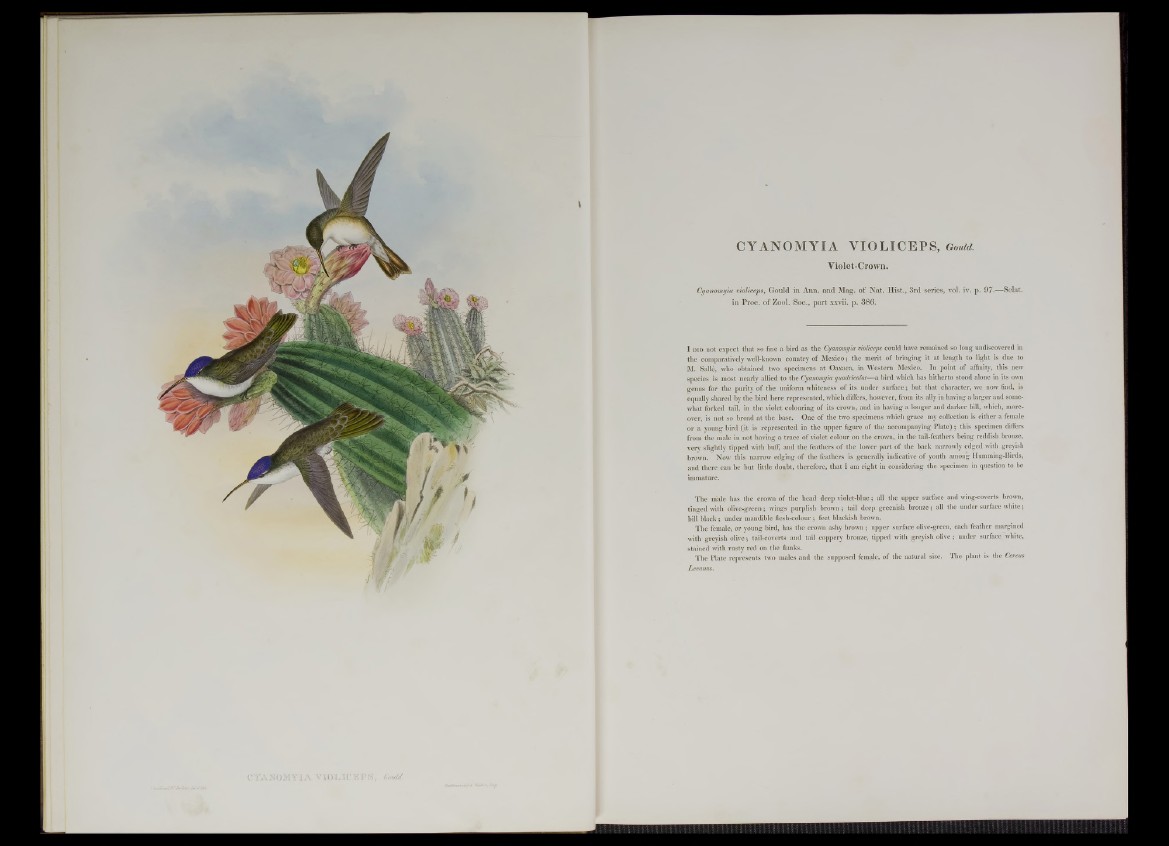
CYANOMYIA VIO LICE PS , GmM
CYANOMYIA VIOLICEPS, Gould.
Violet-Crown.
Cyanomyia violiceps, Gould in Ann. and Mag. o f Nat. Hist., 3rd series, vol. iv. p. 97.—Sclat.
in Proc. o f Zool. Soc., p a rt xxvii. p. 386.
I d i d not expect that so fine a bird as the Cyanomyia violiceps could have remained so long undiscovered in
the comparatively well-known country of Mexico; the merit of bringing it at length to light is due to
M. Salle, who obtained two specimens at Oaxaca, in Western Mexico. In point of affinity, this new
species is most nearly allied to the Cyanomyia quadricolor—a bird which has hitherto stood alone in its own
genus for the purity of the uniform whiteness of its under surface; but that character, we now find, is
equally shared by the bird here represented, which differs, however, from its ally in having a larger and somewhat
forked tail, in the violet colouring of its crown, and in having a longer and darker bill, which, moreover,
is not so broad at the base. One of the two specimens which grace my collection is either a female
or a young bird (it is represented in the upper figure of the accompanying Plate); this specimen differs
from the male in not having a trace of violet colour on the crown, in the tail-feathers being reddish bronze,
very slightly tipped with buff, and the feathers of the lower part of the back narrowly edged with greyish
brown. Now this narrow edging of the feathers is generally indicative of youth among Humming-Birds,
and there can be but little doubt, therefore, that I am right in considering the specimen in question to be
immature.
The miale has the crown of the head deep violet-blue; all the upper surface and wing-coverts brown,
tinged with olive-green; wings purplish brown ; tail deep greenish bronze; all the under surface white;
bill black; under mandible flesh-colour; feet blackish brown.
The female, or young bird, has the crown ashy brown; upper surface olive-green, each feather margined
with greyish olive; tail-coverts and tail coppery bronze, tipped with greyish olive; under surface white,
stained with rusty red on the flanks.
The Plate represents two males and the supposed female, of the natural size. The plant is the Cereus
Leeanus.